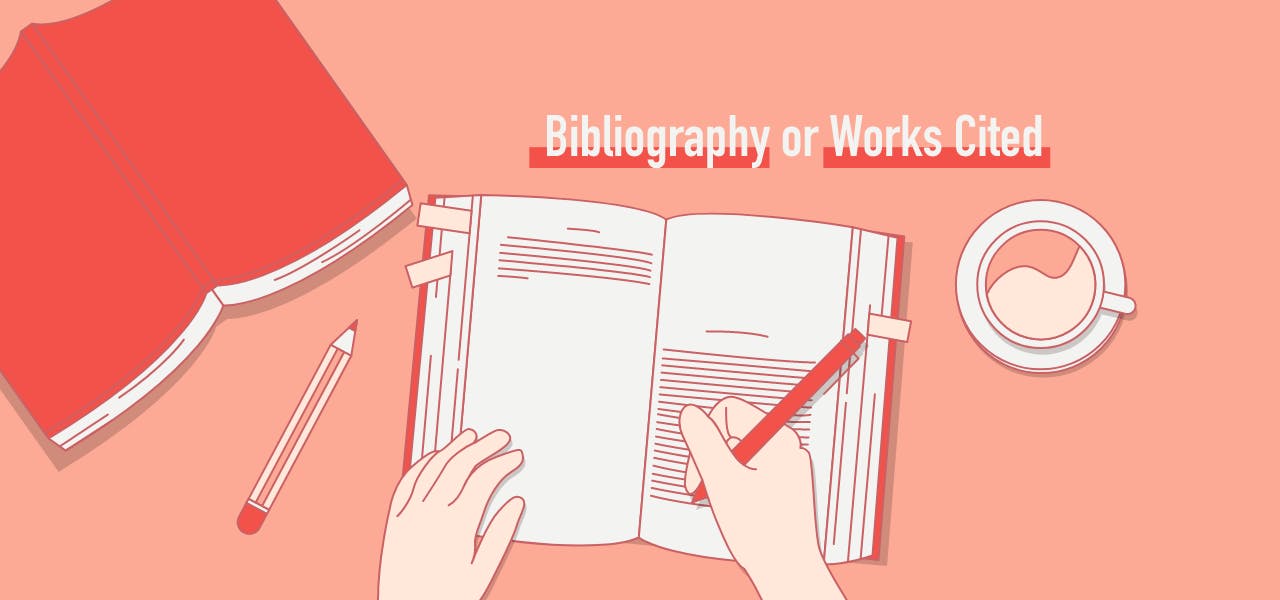No matter how many papers you write during the course of your academic career, one thing you can never slack on is the bibliography or works cited page. These aren’t the most interesting part of any paper, and it’s easy to convince yourself that they don’t matter and no one reads them, anyway. But the truth is that the importance of a references page can’t be discounted, or your entire scholarly reputation might be on the line.
The works cited or bibliography is a crucial component of your paper. It’s where you reference any source you used so that you aren’t accused of plagiarism down the line. It can determine your paper’s credibility and your reputation when any part of your paper is called into question. The fact is that these papers aren’t hard to put together; they’re just boring and cumbersome, making it easy to make mistakes. But with these tips, your next references page can be easier and more thorough, preventing missteps that could be damaging to your entire research, as well as your scholarly name.
Bibliography Vs. Works Cited: The Difference
Throughout your time as an academic scholar, you’re going to be expected to turn in papers written in different formats. Knowing the terminology required for APA versus Chicago versus MLA, etc., is crucial. The wrong reference page can result in a rejection of your whole paper from a publisher, which is easy to fix, but time-consuming and stressful.
Every citation style comes hand-in-hand with a different name that is used to mean the same thing. How you list your sources in your paper could be called a “works cited” list, a “reference” list, or a “bibliography.” Don’t assume you can do the same thing for all of these and write up a one-size-fits-all paper. Each one has nuances that make it different.
In a “Works Cited,” the list is written alphabetically, covering all the sources you used as you wrote your paper. Anything you have quoted or paraphrased from must be included. This is the term for most papers that are written in MLA format, and all sources are covered in alphabetical order starting with the author’s last name when relevant.
A reference list, on the other hand, is similar to a Works Cited but is used when APA format is the required style. This page is headed as “References” and is also arranged by the author’s last name, but the capitalization and other information included in the source reference are slightly different.
A bibliography is very unlike a Works Cited or Reference, and these are more intricate. You’ll cite the sources you used in your paper, of course, but in a bibliography, you also include any material that was used while you were preparing your research, even if you didn’t cite it in the paper directly or indirectly. A bibliography is the reference citation paper of choice in Chicago and Turabian citation styles. Often, you’ll find these are long reference lists that come at the end of a document in which footnotes correlate to the reference within the paper’s body.
Tips for Making Your Citing Job Easier
If you wait until the end of your paper to work on citing your references, you’ve made your job harder. The same information can be collected and put together as you go, helping you work smarter, not harder, if you follow these tips:
● Have a method to keep track of every material you use during your research. Keep it on hand, whether it’s an electronic program or a written notebook, so you can add to it every time you use a new source.
● Try to use one source at a time so that you don’t forget to document any of them or get confused on where you got an idea from.
● For printed sources, include in your list the author’s name, title of the publication and article, date and place of publication, publishing company, and volume number.
● For website sources, include in your list the author name, the editor name, the title of the page, the company publishing the article, the URL address, and the date you most recently looked at the site (you may have to update this every time you go back to the source).
● Use this notebook or electronic list to create your source page. If you’re making a bibliography, transfer all of this into an excel document or other spreadsheet so you can sort it easily in alphabetical order. If you’re making a Works Cited or Reference page, highlight the sources you actually cited in your research paper, either directly or indirectly, and include them on a spreadsheet. Then, copy and paste the reference information into a research compilation program, like Impactio.
With these tips, you’ll find it’s a lot easier to put together your source list, no matter what reference style your publisher requests.
Citations are Made Easy With Impactio
Citing your source is extra important in today’s Digital Era, when a person’s scholarly reputation is determined by things like citation indicators. These aren’t going anywhere any time soon, although the formulas used to determine them will be adjusted. As a scholar,you must cite your sources correctly and follow your own citation indicators. Both of these jobs are made easy with Impactio.
This all-in-one platform gives expert scholars like you the tools they need to compile and publish their work in one place. From there, the next step after publishing is to follow your impact through citations. Impactio’s program documents all your relevant citation indicators in easy-to-understand reports. Whatever you’re looking for, you can tweak selected details to see the impact your work is making and watch for trends. Create your citation pages easily and follow your own indicators by using Impactio.
